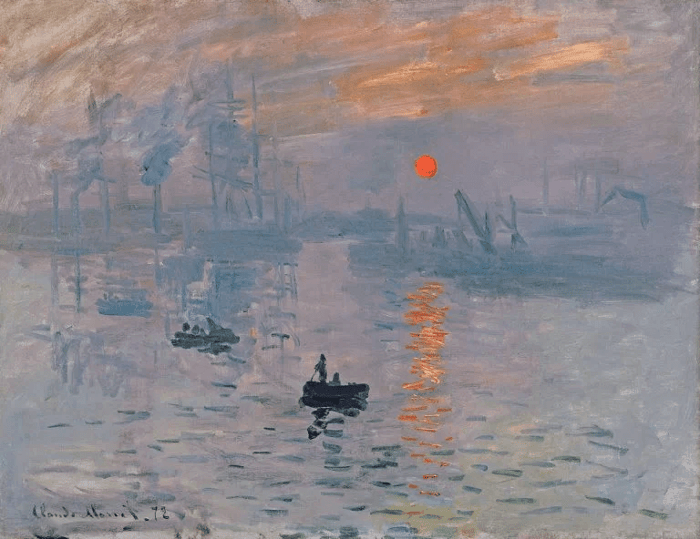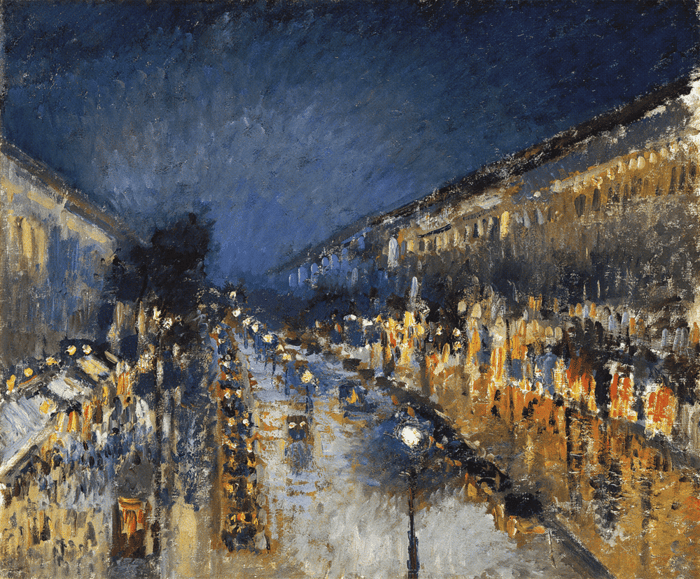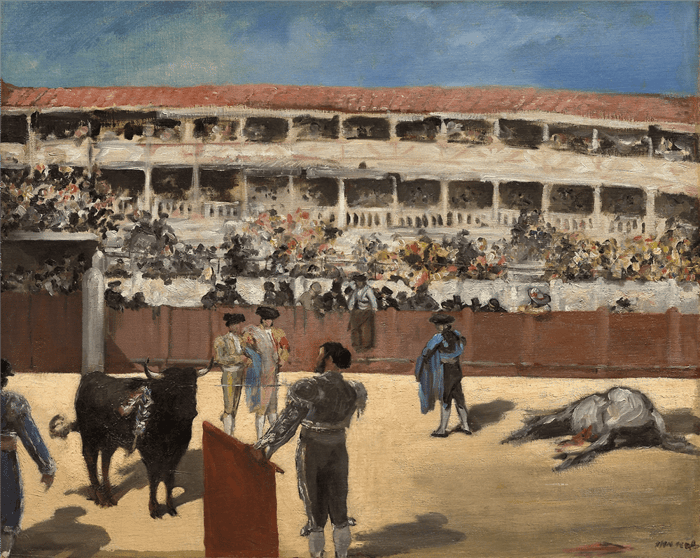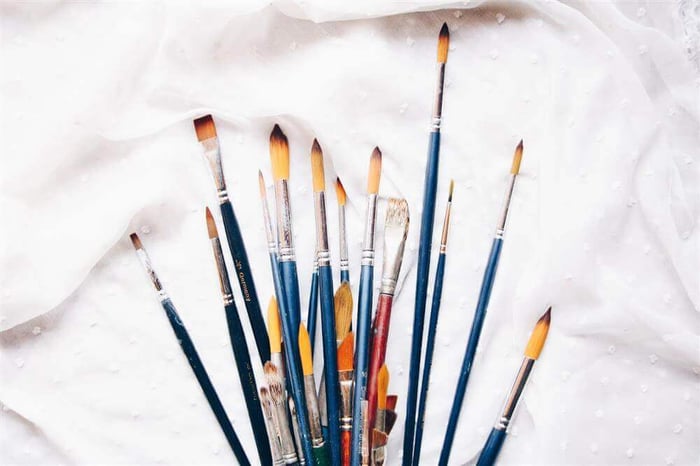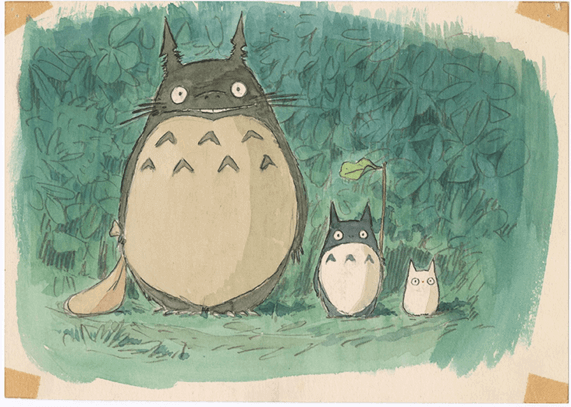
Let’s go back in time to the nineteenth century and delve into the works of 5 famous Impressionist landscape artists. These artists didn’t just paint to fill a canvas, they transformed the world around them into a symphony of colours and textures. From the world of Monet to Sisley, we will take you on a journey through some of the most monumental landscapes of the Impressionist movement.
Overview:
Claude Monet
Camille Pissarro
Pierre-Auguste Renoir
Édouard Manet
Alfred Sisley
1.Claude Monet
Impression, Sunrise - Claude Monet, 1872
Claude Monet was a French artist of the nineteenth century and the face of Impressionism. Monet aimed to capture the beauty of nature and everyday life in his paintings, which he achieved through his total mastery of colour and light. Whether he was painting water lilies, landscapes, or city scenes, he had an amazing ability to make everything look vibrant and alive using oil paints.
Monet was always experimenting with new techniques and styles. He wasn't afraid to break the rules and try something different, and that's what made him an icon in the art world.
2. Camille Pissarro
Boulevard Montmartre at Night - Camille Pissarro, 1897
Danish-French artist Camille Pissarro was another highly influential impressionist who became a mentor to many young artists. Pissarro was particularly intrigued by landscapes that were touched by light and often painted the same landscape at different times of the day.
Despite being famous for his impressionist style, it wasn’t his own chosen art movement. During his art career, Pissarro also touched on other art movements such as neo-impressionism and Vincent Van Gogh’s style of post-impressionism.
3. Pierre-Auguste Renoir
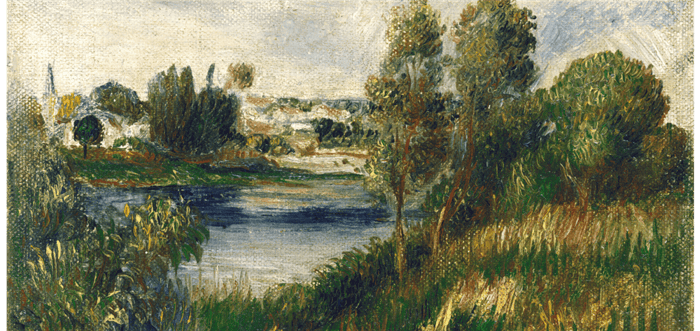
Landscape at Vétheuil- Pierre-Auguste Renoir, 1890
Impressionist landscape artist Pierre-Auguste Renoir was born into a working-class family in France and built his success through art. Renoir painted landscapes with soft, warm hues that evoke a sense of joy and happiness.
Renoir didn’t only paint landscapes as his subject matter, he was also famous for his figures and still-life paintings. Renoir chose not to follow the rules of traditional art, and he often incorporated elements of other styles, such as Japanese prints and Rococo art, into his work.
4. Édouard Manet
Bullfight - Édouard Manet, 1866
Édouard Manet, a French impressionist landscape artist and a master of technique. Manet painted with rich, textured brush strokes that bring his subjects to life. He was particularly skilled at using paintbrushes to create depth and dimension in his work.
Manet was often criticised by his peers for his unconventional style. But his influence on the art world was significant, and his work paved the way for many of the artists who came after him.
5. Alfred Sisley
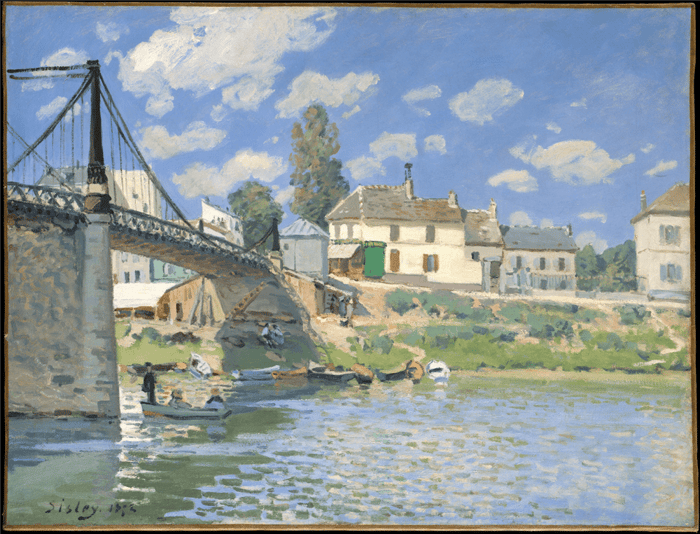
The Bridge at Villeneuve-la-Garenne - Alfred Sisley, 1872
Born in Paris, Alfred Sisley was the most dedicated artist to painting landscapes in the impressionist movement. Sisley painted his landscapes with colourful palettes and controlled brushstrokes, and he often depicted scenes of the countryside of France.
Sisley was close friends with Claude Monet and Pierre-Auguste Renoir and they often painted together. Unlike his peers, Sisley never achieved success during his art career, and it was only after his death that Sisley was acknowledged as a great artist. Sisley’s works can now be found in galleries worldwide.
The Bridge at Villeneuve-la-Garenne - Alfred Sisley, 1872
Born in Paris, Alfred Sisley was the most dedicated artist to painting landscapes in the impressionist movement. Sisley painted his landscapes with colourful palettes and controlled brushstrokes, and he often depicted scenes of the countryside of France.
Sisley was close friends with Claude Monet and Pierre-Auguste Renoir and they often painted together. Unlike his peers, Sisley never achieved success during his art career, and it was only after his death that Sisley was acknowledged as a great artist. Sisley’s works can now be found in galleries worldwide.
Your one-stop art supplies shop
If you’re feeling inspired by these five famous impressionists, shop with Art to Art and experience the beauty and wonder of creating your own impressionist landscape art with our large range of art supplies. We stock everything from artist paints and oil paint mediums to paint brush cleaners, plus so much more! If you have any questions or enquiries, please do not hesitate to contact us online.
FAQS
What are the characteristics of Impressionist landscape painting?
Five of the main characteristics of landscapes painted in the impressionist style are:
- Impressionist landscape painting uses bright colours.
- loose and lively brush strokes.
- The focus is on capturing the effects of light and colour in nature.
- Impressionist artists often painted outdoors.
- Broken colour and mixing techniques are used to create depth and movement.
Why did the Impressionist painters prefer painting outdoors?
The Impressionist painters liked to paint outdoors because it helped them capture the beauty of natural light and colour. Painting outside allowed them to see the way the light and atmosphere change firsthand, which was important for their artistic style.
What are the colours of Impressionism?
Impressionist paintings are known for their bright and vivid colouring. Instead of trying to capture realistic colours, Impressionist artists aimed to create a mood or feeling through their use of colour. Some of these include:
Bright yellows & oranges - for sunlight and warmth.
Light blues & greens - for water and sky.
Pink, purple, & red - for flowers and sunsets.
Pastel shades - for skin tones and clothing.
People also read




